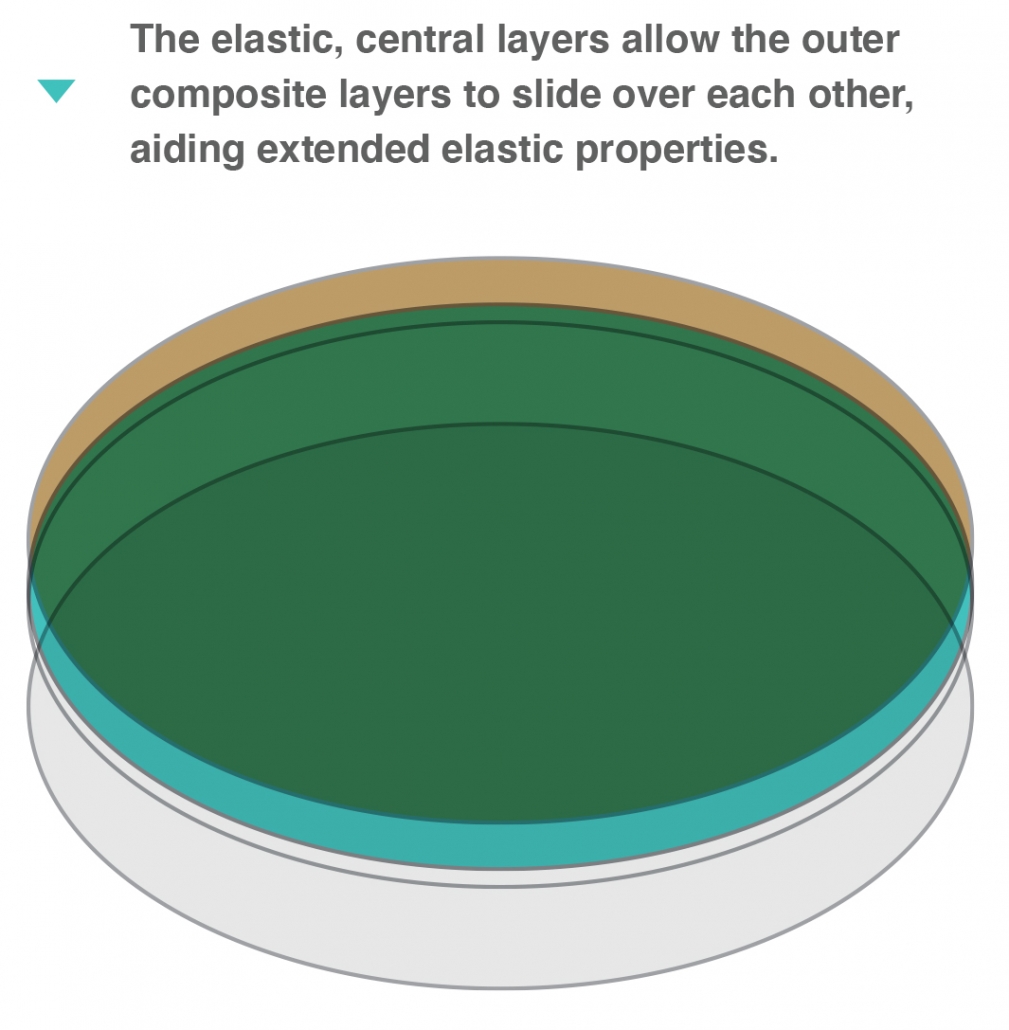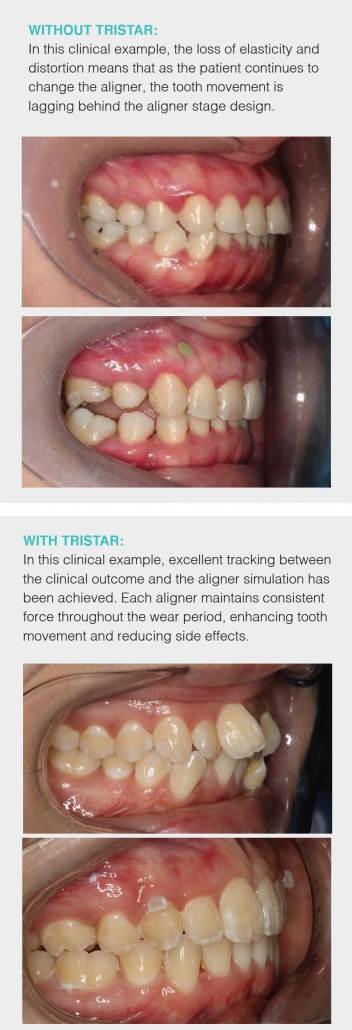Most of the other commercially available materials are made of polyester material using only PETG as its base resin. Tristar is made using rigid engineering resin at the composite core with superior stress retention and cracks resistant properties.
In addition to being tough and durable, this material performs exceptionally well in aligning patients’ teeth. Its other significant benefits include superior chemical stain resistance and clarity.
CRACK RESISTANCE
Cracking can occur when removing an appliance from a forming mold, or by a patient when in use. Tristar having a tough polymer backbone, has a reputation as the benchmark for crack resistance. Plastic toughness and crack resistance can be evaluated by measuring Impact Strength.
Please see a video comparison of the material here:
Over a decade of experience in fabricating clear aligners has demonstrated that demands for clear
aligner movement has increased, from simple first order alignment to complex torque movements as well
as vertical control.
KEY FEATURES: STRESS RETENTION
The impact strength was measured according to Standard Test Method (ASTM D5420) for Impact Resistance of Flat, Rigid Plastic Specimen

Original clear aligners were single layered materials or simple dual layered materials. These were often either of polyurethane, a flexible or tough material, or based on Polyethylene terephthalate glycol, commonly
known as PETG.
These original formulations had various compromises. Polyurethane, although tough, often proved to be too stiff. PETG, although aesthetic, had fairly poor crack resistance and often users would complain of aligner breakage upon insertion or removal.
By far the biggest compromise was the fact that all single layer plastic materials exhibit fluid properties. A portion of the plastic sheet behaved like an elastic, rebounding back to its original form, but a large percentage of the plastic sheet behaved like a fluid, causing permanent deformation and lack of force consistency. Current single layered materials lose up to 50% of their ability to deliver the same force over the first 8 hours of application of the aligner.
Our new generation of aligner material overcomes these difficulties by providing a composite sandwich, which in combination, provides high impact
strength, yet remains flexible and comfortable for your patients. Essentially, this material has minimal fluid behaviour and maximum elastic behaviour.
The force consistency when applied intraorally is amongst the highest of all commercially available clear aligner materials.
Tristar is all about delivering appropriate forces when the right clear aligner design and treatment plan is applied, Tristar clear aligner materials provide maximum comfort and maximum confidence for both patients and doctors.
Tristar aligner is economical, yet effective. Reduce broken/cracked aligner issues, with best in class performance. A composite core with a tough, yet
flexible outer shell, Tristar will outperform all single layer aligner materials.
When compared with competing composite tray materials, Tristar outperforms them, comfortably, whilst being cheaper, significantly.
The key factor behind the delivery of orthodontic force is consistent, soft force delivery. Composite sheets like Tristar will be the way forward for
clinicians to deliver effective tooth movement with clear aligners. The best way to experience this material is to ask for your free sample, today!




